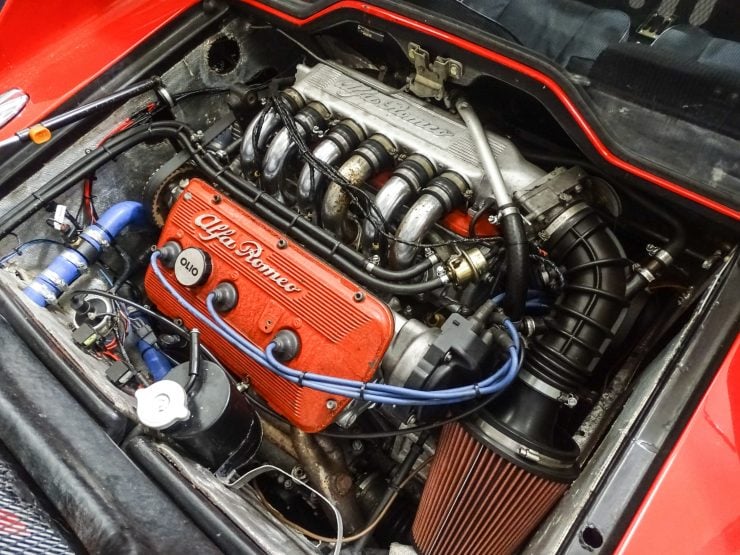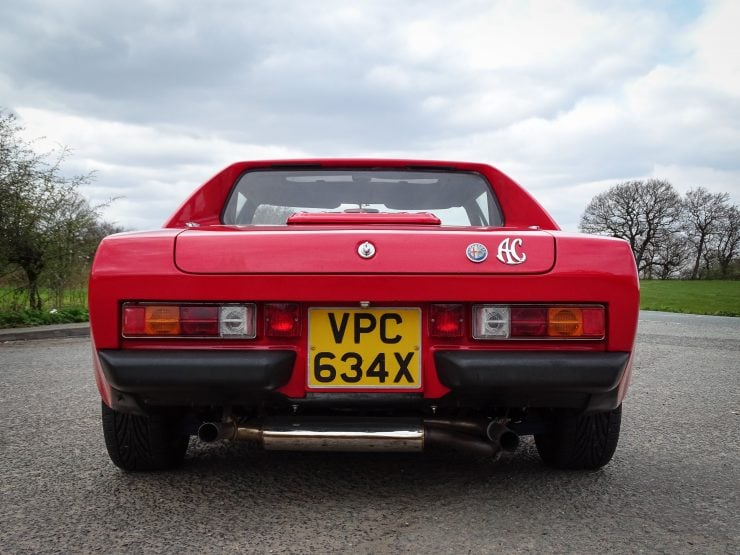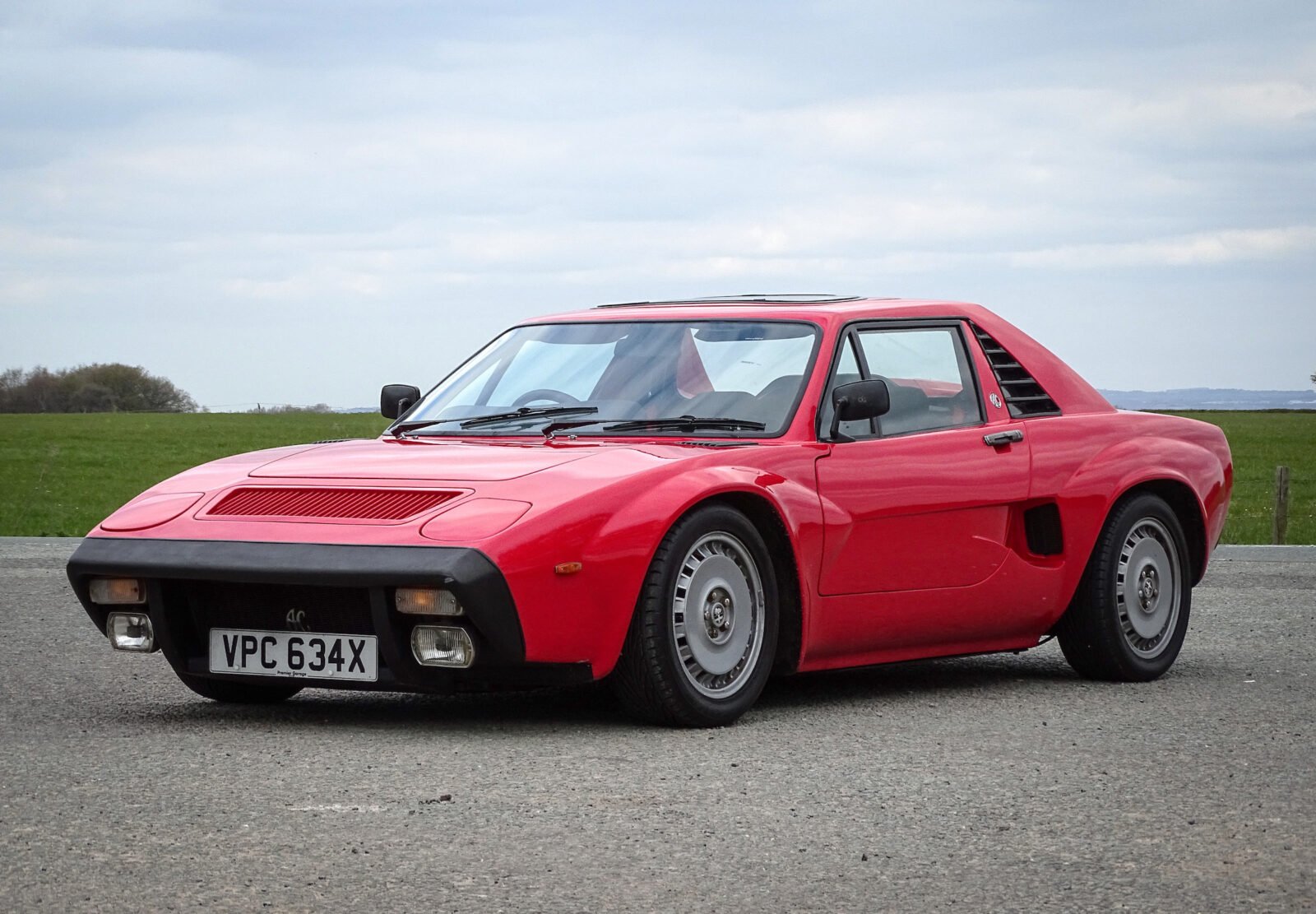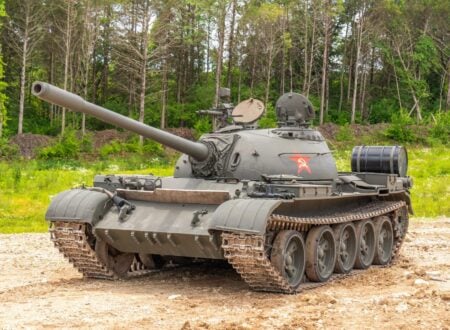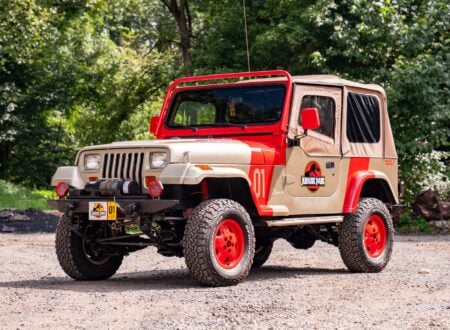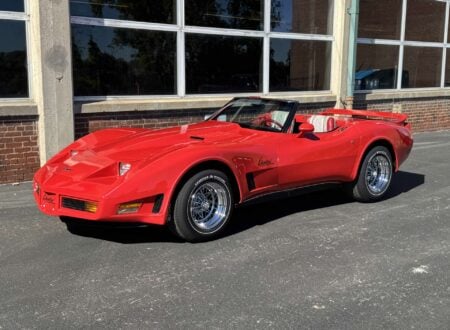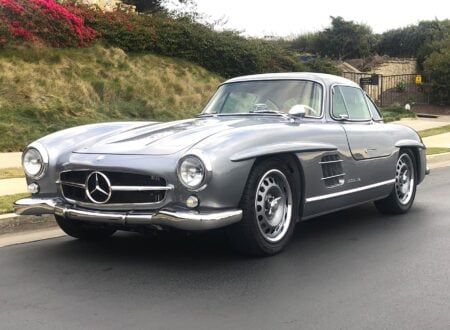The AC 3000 ME has been described as the little-known British answer to the mighty Lancia Stratos. The history of the wedge-shaped, mid-engined British sports car is fascinating.
It was very nearly Ford’s Group B rally car, and Carroll Shelby almost build a production high-performance version named the Shelby ME 2.2 Turbo.
Despite the rarity of the AC 3000 ME it’s still relatively affordable, good examples change hands for south of £20,000, though I suspect this is likely to change over the next few years.
The AC 3000 ME – The Beginnings
The AC 3000 ME started life as a passion project for Peter Bohanna, an automotive body structures engineer and significant figure in the world of high-performance British race cars in the 1960s.
Bohanna had been instrumental working on the Ford GT40 project with Ford’s Advanced Vehicle Operations and Lola, then by the late 1960s he was working for Lola on their hugely successful Can-Am Championship-winning T70 model.

It would be at Lola that Bohanna would meet Robin Stables, prior to his tenure at Lola he’d been a motorsport mechanic and Lotus dealer. The two men formed the Bohanna Stables company and in 1968 their design won the contract for an all-new British sports car tendered by the wealthy aristocrat Piers Weld-Forester.
Their advanced new design wouldn’t go into production with Weld-Forester, the two men instead took their design (now called the Diablo) to AC and TVR, but neither were willing to sign on the line to put it into production.
The prototype was first shown at the London Racing Car Show in 1972, after AC’s Keith Judd saw the Diablo at the show he became convinced it was the future of AC. After getting permission from Bohanna and Stables he drove the prototype to the AC headquarters and convinced AC company owner Derek Hurlock to acquire the rights to the car – which he did.
The AC 3000 ME Engine + Specifications
The specifications of the AC 3000 ME were relatively advanced for the era, it features a folded sheet steel central tub with integrated roll-over protection, subframes are fitted at the front and rear to attach the suspension, engine, etc.
Suspension is independent front and rear, made up of upper and lower A-arms with coil springs, telescopic shock-absorbers, and anti-dive/anti-squat geometry. Braking is provided by a dual hydraulic system with Girling discs on all four corners wrapped with Wolfrace alloy wheels and Pirelli rubber.

The early prototypes of the 3000 ME used a number of different engines including a 1.5 litre from the Austin Maxi. Fortunately the later production cars were fitted with the larger 3.0 litre Ford Essex V6 with 138 bhp and 192 ft lbs of torque.
The engine was mounted behind the passenger compartment in a transverse orientation, mated to an AC-built 5-speed gearbox containing Hewland gears, and it’s operated via a gated shifter.
The 3000 ME has a relatively low kerb weight of 1,085 kilograms or 2,392 lbs in part thanks to its fibreglass body, and the weight distribution is 40/60 front/rear.
There were plans to offer turbocharged versions of the car and conversions were offered in-period. The biggest turbo upgrade turned out over 300 bhp thanks to twin-turbos, Cosworth pistons, Weber carburettors, and water injection. Sadly none of the production plans came to pass, and early surviving turbocharged cars are highly sought after by the 3000 ME cognoscenti.
The AC 3000 ME – The Production Run
The production run of the AC 3000 ME was anything but predictable, the challenges of putting an entirely new car into full production caused a series of problems for AC.
Initial crash testing resulted in the chassis needing to be reworked which significantly slowed the process down. The benefit of this was that the chassis that went into production was considerably safer, stiffer, and stronger.
The 3000 ME officially went on sale at the 1978 NEC Motor Show with a price of ₤11,300, sales were somewhat slow as the car was now competing with the likes of the Lotus Esprit.
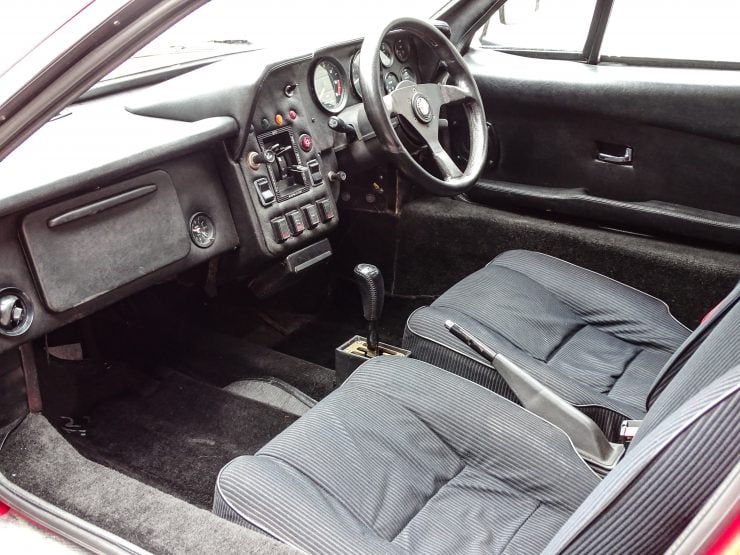
Production ceased in 1984 at the Thames Ditton factory when just 80 cars had been delivered. A new company named AC (Scotland) plc. was formed by David McDonald who bought the rights to build the 3000 ME and a new factory in Hillington, Glasgow.
The plan was to ramp up to 40 cars per week, but sadly this never came to pass and just 30 cars were built in total. The Scottish company hired former BRM production engineer Aubrey Woods to develop a MKII version of the car with an Alfa Romeo engine and running gear.
The power unit chosen was the Alfa Romeo 2.5 litre Busso engine, a 60º V6 with a SOHC per bank, 12-valve cylinder heads, an aluminium alloy engine block and heads, and much more tuning ability than the original Ford V6.
Production was shut down in 1985 before this MKII prototype was ready for production, which is a great shame as it has all the hallmarks of a genuinely fantastic mid-engined sports car.
Group B Rally and the Carroll Shelby Version
Two of the greatest “what ifs” in the story of the AC 3000 ME are the stories of how the car was almost developed by Ford for Group B racing duties, and how it was later very nearly sold in the USA as a heavily modified turbo version by Carroll Shelby – a man who was no stranger to the AC marque.
In 1980 Ford of Europe vice president Karl Ludvigsen learned about the 3000 ME whilst discussing replacement options for the recently retired Mark II Escort rally car. Ludvigsen had been talking to Ford of Europe chairman Bob Lutz and Ghia’s chief designer Filippo Sapino, the men agreed the car would be perfect, and the similarity to the formerly dominant Lancia Stratos rally car was noted.
Ford’s directory of rallying Peter Ashcroft and Ford’s chief designer Uwe Bahnsen were tasking with developing a prototype, and AC provided Ghia with one complete car and one rolling chassis.
The 3000 ME was modified extensively for the project and renamed the AC Ghia, it was displayed at the 1981 Geneva Motor Show and earned positive reviews from the motoring media, but by this time Ford had decided to race with the turbocharged MKIII Escort instead.
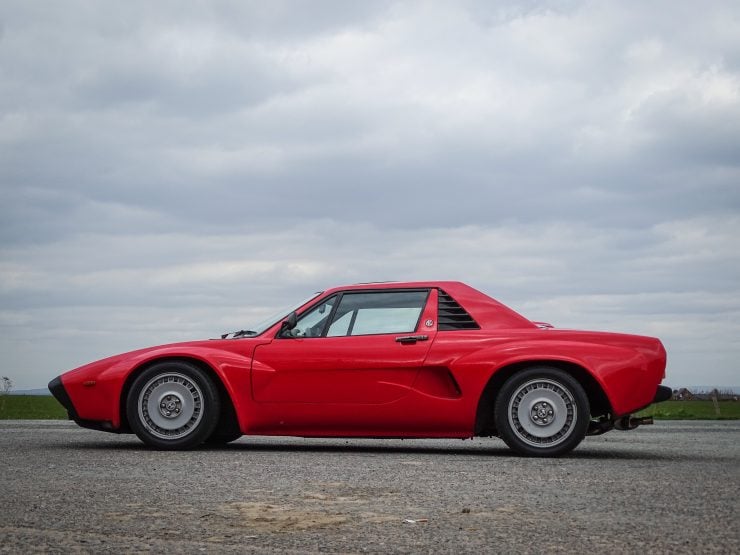
Carroll Shelby first saw the 3000 ME in the early 1980s, he worked with a series of people including Kas Kastner of Arkay Incorporated and his own engineering team at the then-new Chrysler-Shelby High Performance Center in Santa Fe Springs.
Initially they installed a naturally-aspirated 2.2 litre Chrysler engine but this was quickly upgraded to a turbocharged G-24 engine and 5-speed transaxle. They called the car the Shelby ME 2.2 Turbo, it had bodywork completed by Metalcrafters before being sent to Chrysler President Lee Iacocca.
Iacocca and his team decided against putting it into production and the prototype became a test bed for Shelby, eventually passing into the hands of a private collector.
The AC 3000 ME MKII Prototype Shown Here
The car you see here is one of the most significant of the surviving 3000 MEs, it’s the MKII prototype built by the Scottish 3000 ME team in 1985.
It includes the more advanced Alfa Romeo V6 (now upgraded from 2.5 litres to the 3.0 litre version), and its running gear was extensively replaced with Alfa Romeo equipment including suspension parts, wheels, the control unit, pedals, steering assembly, the CV drive shafts, and upgraded ventilated disc brakes.
This is essentially what the AC 3000 ME would have evolved into had it been given the chance, the much lighter aluminum alloy V6 lowered the kerb weight a little but it also reduced the rear weight bias and reduced the propensity for oversteer.
This remarkably well-preserved piece of motoring history is being auctioned by H and H on May the 1st with a remarkably affordable estimated hammer price of between £18,000 and £22,000.
If you’d like to read more about it or register to bid you can click here to visit the listing.
